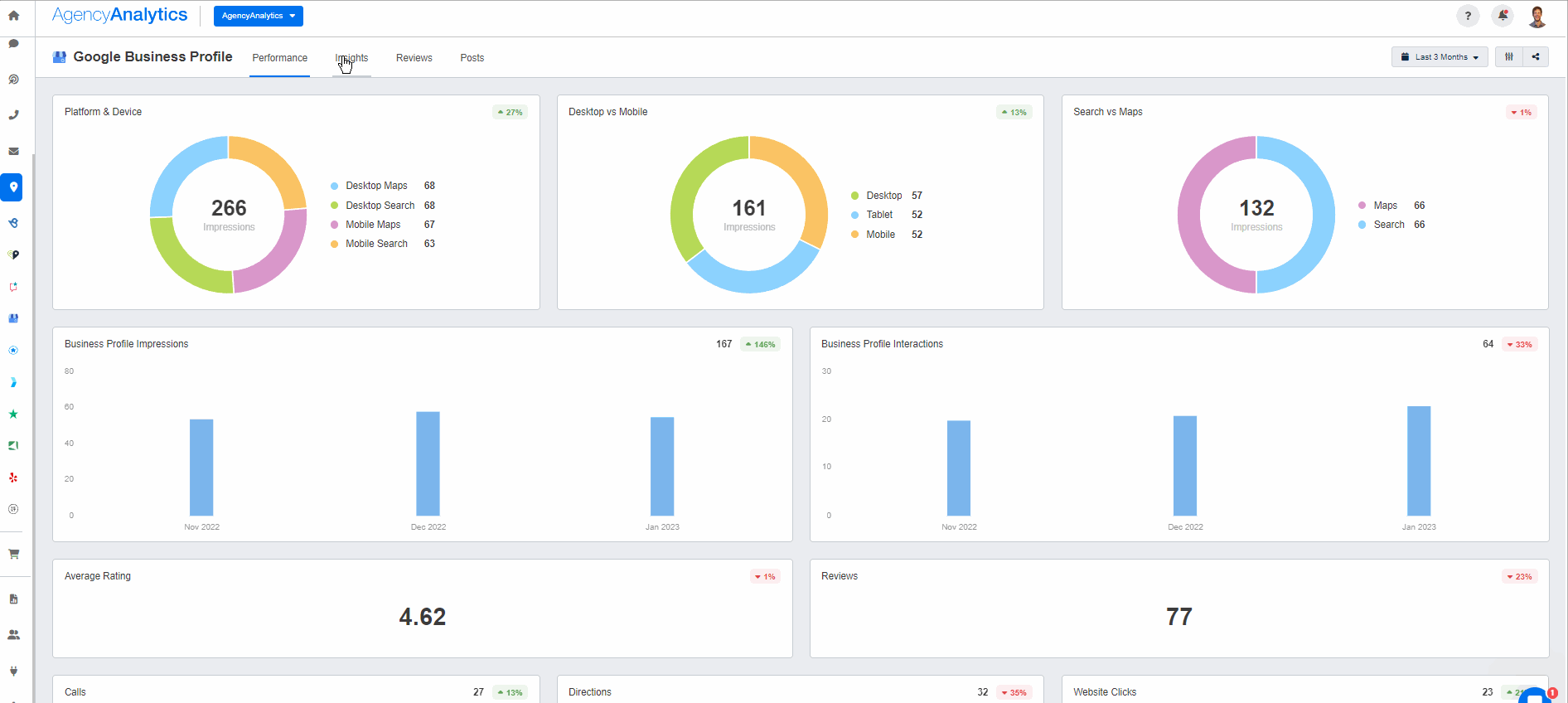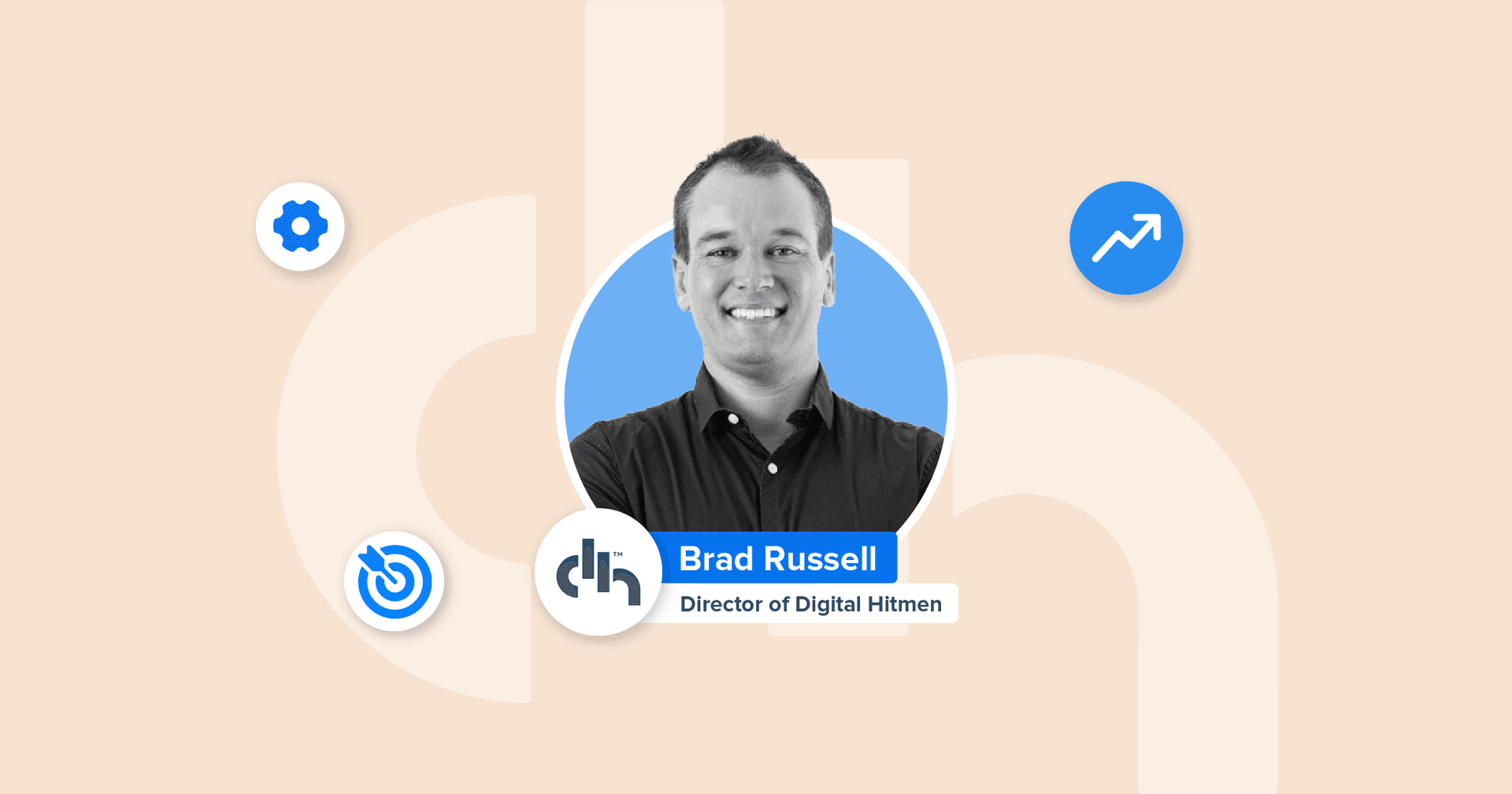Table of Contents
Table of Contents
- Why Is Talent Acquisition Important?
- What’s the Difference Between Talent Acquisition Vs. Recruitment?
- Common Challenges Agencies Face When Creating a Talent Acquisition Strategy
- 5 of The Best Talent Acquisition Strategies To Proactively Build Your Pipeline
- 3 Steps To Choose The Best Candidates for Your Agency
- Strategic Talent Acquisition Is a Long Haul Process That’s Worth the Effort
7,000+ agencies have ditched manual reports. You can too.
Free 14-Day TrialQUICK SUMMARY:
Talented employees drive agency success by delivering exceptional client results and fueling business growth. However, rushing the hiring process leads to wasted effort, delayed projects, and employee turnover. A proactive talent acquisition strategy addresses these challenges by aligning workforce planning with long-term business goals. The article highlights how a talent strategy saves time, simplifies hiring, and prepares agencies to meet staffing demands. It also discusses key steps to evaluate and select the right candidates.
Talented employees are the driving force behind every successful agency.
When placed in the right roles, they deliver exceptional client results, fuel business growth, and create a ripple effect of success. That said, finding the right talent is often easier said than done. When time is tight, rushing the hiring process often leads to wasted effort, delayed projects, and unnecessary strain on your entire team.
What if there were a way to meet immediate hiring needs and build a steady pipeline of qualified candidates for the future? That’s the value of a talent acquisition strategy—a proactive workforce planning approach that aligns staffing with long-term business goals.
Rather than waiting until an urgent need arises, gathering a “wish list” of potential agency hires before you need them will make your life easier when the time comes to fill a role.
In this article, we’ll explain how a well-crafted talent acquisition strategy saves time, streamlines hiring, and builds a solid employer value proposition. We’ll also explore how to choose the right candidates after building a steady, thriving talent pipeline.
Why Is Talent Acquisition Important?
Talent acquisition success goes beyond collecting a stack of resumes.
Instead, it’s about creating a sustainable pipeline of top-tier professionals who align with your agency's vision and long-term goals. After all, no one wants to spend time interviewing passive candidates or ones that are unqualified.
More specifically, a strong talent acquisition strategy:
Minimizes Disruptions Caused by Sudden Staffing Gaps: Proactively sourcing candidates ensures key positions are filled quickly. This reduces downtime and maintains uninterrupted client service delivery.
Reduces Hiring Costs Over Time: Creating long-term candidate relationships lowers the need for costly recruitment campaigns.
Supports Employer Branding: A well-executed talent acquisition strategy enhances your agency's reputation as a sought-after workplace, making it easier to attract top-tier candidates.
By implementing a robust talent acquisition strategy, agencies future-proof their workforce, maintain a competitive edge, and build long-term success.
What’s the Difference Between Talent Acquisition Vs. Recruitment?
Recruitment and talent acquisition are often used interchangeably. However, they’re actually distinct terms. To break it down further:
Recruitment is a short-term process focused on filling vacancies. It’s reactive, addressing immediate staffing needs by finding and hiring candidates as quickly as possible.
This approach works well for urgent hiring. However, it often lacks the foresight needed for sustained growth. On the other hand:
Talent Acquisition is a long-term, strategic approach–one that involves identifying, attracting, and nurturing relationships with potential candidates (even before a role opens up). This forward-thinking approach ensures you have a pool of qualified talent to choose from in the event of planned growth or unexpected changes.
In short, recruitment solves today’s problems, while talent acquisition prepares your agency for tomorrow’s opportunities.
Common Challenges Agencies Face When Creating a Talent Acquisition Strategy
Building an effective talent acquisition strategy is essential for agency growth, but it’s not without its hurdles.
Agencies often encounter unique challenges that slow down hiring, strain resources, and impact the ability to attract top talent. Here are a few common struggles and how to overcome them.
Deciding on Clear Role Expectations
Crafting an effective talent acquisition strategy begins with clarity. Without well-defined business goals and role expectations, it’s nearly impossible to acquire the right talent.
Making the wrong hiring decision is costly, too. Imagine needing a media buyer for a retail client’s large-scale programmatic ad campaign, with peak season just five months away.
Your hiring manager posts an “URGENT” job ad and quickly hires someone with basic PPC experience… but no expertise in managing six-figure budgets. The new hire struggles to handle the complexities of the role, which results in poor campaign performance and financial loss.
What should have been done differently here? Well, for starters, creating a straightforward job description. As a general rule of thumb, keep these questions in mind:
What job title are we hiring for?
What’s the job description for this role?
What are the soft skills that a great hire should have?
Is this a full-time or part-time job posting? Are we hiring hourly employees for short-term work?
How many years of experience should this candidate have?
Are there any academic qualifications or preferences for this job posting?
Where will we share this job post (e.g., social media sites, specialized job boards)?
Are we hiring employees for an in-person role, or perhaps a hybrid or remote marketing team?
Here’s another tip: Share KPI expectations for greater transparency. This gives an idea of what success looks like, allowing candidates to choose whether they want to continue the application process.
If you hire someone for a marketing role, define important numbers that will demonstrate their abilities. These core KPIs let the person you’ve hired know whether they’re succeeding in this role. It also allows their manager to know the same.
Travis Weathers, CEO, Rotate Digital
Finding the Right Niche-Based Skills and Experience
If you’re looking to fill a niche-specialized role (e.g., copywriting for insurance clients), you’ll need more than a generic talent acquisition strategy.
It often requires more vetting, an understanding of industry-specific requirements, and targeted sourcing. In the absence of this approach, agencies may encounter issues like mismatched skill sets or significantly longer onboarding times. To prevent this from happening, focus on industry-specific expertise–even if it results in a longer hiring process. It reduces the chances of picking the wrong candidate, which may lead to disruptions or additional costs.
Here’s a real-life talent acquisition example. US-based agency The Modern Firm has hired copywriters with legal backgrounds to better serve small law firm clients. In fact, some of their writers are attorneys, which helps them navigate complex legal jargon and successfully produce accurate work. By taking the time to source highly qualified candidates, they’re better able to create accurate content, build a bank of solid potential hires, and maintain a competitive advantage.
Researching and understanding the law makes a huge difference when bringing good employees on board. Our clients appreciate the attention to detail, understanding of the differences between jurisdictions, and knowledge of legal ethics guidelines by state.
Erin Ricchiazzi, Director of Online Marketing, The Modern Firm
Simplified SEO is another niche agency with a similar approach. They specialize in providing SEO services to therapists and focus on hires with backgrounds in the mental health field. This has helped them create custom solutions, which has resulted in faster turnaround times and happier clients.
Sticking To Locally-Based Candidates, Especially for Based Roles
Depending on the job posting, hiring in a specific geographic area makes more sense. For example, a resident may have more relevant social media recommendations for your local SEO client who wants to expand their franchise restaurant chain.
On the other hand, stating geographic parameters in job posts could put a dent in your talent acquisition strategy. It’s incredibly constricting when you’re looking for a highly specialized skill set with a limited number of potential candidates who can fill those shoes.
We focus on finding the best digital marketing experts from a global talent pool. This gives a better outcome for our clients than a more traditional, geographically based agency. There is a shortage of digital marketing talent, and our ability to build a team from a global, qualified talent pool gives us an advantage and better results.
Andy Hill, Founder, Distribute Digital
Wondering how to create a global talent acquisition strategy? To get started:
Set clear guidelines about the job expectations, job title, and skills you’re looking for.
Clearly state any work authorization and residency requirements in job posts to avoid compliance issues down the road.
If you’ve got short-term projects in the pipeline, share job descriptions on freelance platforms that give on-demand access to global talent (e.g., online job boards like Upwork or Fivver). This is a useful way to find hourly employees.
We tend to keep going back to Upwork to find freelancers. The quality of creative talent you can find on there keeps improving. So, for short-term projects, it's ideal for a quick and easy way to get someone in.
Alex Faiers, Founding Director, Addictivity
5 of The Best Talent Acquisition Strategies To Proactively Build Your Pipeline
So, what are the talent acquisition strategies actually worth focusing on?
Look no further–we’re here to outline them in detail! Here are the top ways to attract a pool of top-tier candidates, fill in immediate job roles, and anticipate future hiring needs.
1. Invest in Recruitment Marketing
Aside from job boards, there’s one way to find employees online that’s often overlooked by hiring managers–dedicating time to consistent recruitment marketing.
Recruitment marketing is about showing your agency in a positive light and positioning it as an ideal workplace. That way, it becomes less about pounding the pavement or creating a million job listings. It’s more about creating a stir about your agency that attracts top external candidates over time.
To get started:
Clearly Define Your Agency’s Values, Company Culture, and Employer Brand: This approach will help you create consistent marketing messaging on social media, job boards, and other channels.

Encourage Existing Employees To Share Marketing Collateral on Social Media Platforms: This step positions employees as ambassadors for your agency, increasing reach and credibility. It's also a way to increase employee engagement.
Build a Strong Employer Brand: This is the process of actively investing in your company’s online presence to attract qualified candidates and showcase why you’re worth working for. This includes:
Testimonials from current employees on your social media platforms and company website, along with any cultural insights (e.g., a healthy work-life balance).
Building an up-to-date profile on employer review websites (like Glassdoor).
Creating a Google Business Profile that’s populated with positive client reviews, which positions your agency as an ideal place to work.

Create an internal agency dashboard that helps you streamline reputation management and monitor social media traction. House your clients’ marketing metrics and manage your agency’s reporting under one roof–try AgencyAnalytics today, free for 14 days.
2. Create Employee Referral Programs
What better way to encourage employee engagement than a referral program? It’s a win-win situation for both parties because it:
Provides financial incentives and encourages existing employees to recommend friends and colleagues.
Gives your hiring team access to employee networks, which may result in a wider, relevant talent pool.
May be more cost-effective than recruitment channels that have monthly incurred costs.
Encourages employees to engage in the hiring process, shape company culture, and have a greater sense of belonging as your agency grows.

3. Attend In-Person Events
While you may find employees online or from a job board, don’t underestimate the power of in-person networking events. For example, this may include job fairs at local colleges for entry-level roles or events held by professional organizations.
Use these events to:
Engage candidates face to face, which gives an initial sense of personality types and professionalism.
Recruit employees faster and move top talent further along the hiring process.
Create brand recognition and generate word-of-mouth referrals.
Leave physical marketing collateral (e.g., branded tokens) at strategic locations or events such as career centers, job fairs, and local colleges.
Hire local candidates who have a better understanding of a geographic area, which is useful for agencies that serve primarily small businesses with physical locations (e.g., a dentist or lawyer).
4. Engage An HR Consultant or Recruiter
Sometimes, extra help is needed.
That’s where an HR consultant or recruiter comes in. They’ve got in-depth knowledge of the job market and help you achieve the best hiring outcomes possible.
Wondering what’s the difference between the two? Let’s explore this in more detail.
The Role of a Recruiter
To put it briefly, external recruiters are talent acquisition specialists who:
Create a Detailed Job Post or a Job Ad (e.g., on Popular Online Job Boards Like Indeed or Monster): They’ll manage and post job openings, which means you won’t get bogged down with administrative work.
Leverage Their Extensive Network and Determine the Best Ways to Find Employees: These talent acquisition professionals will have access to candidates who are actively seeking opportunities. They may also share insightful talent analytics to show who’s applying (e.g., LinkedIn demographic data).
Conduct the First Round of Interviews To Validate Credentials, Candidate Experience, and Eligibility: This removes the extra hassle, letting you focus on other high-priority deliverables.
The Role of an HR Consultant
On the other hand, perhaps you already have an internal recruiter, but your overall agency management needs refinement or an overhaul.
In this case, consider hiring an HR consultant to:
Offer an Objective View of Your Current Talent Acquisition Efforts: These HR professionals will evaluate existing hiring strategies to identify gaps, pinpoint inefficiencies, and recommend improvements (e.g., streamlining interview processes).
Develop Guidelines To Hire Employees Ethically. An HR Consultant is equipped to provide strategic advice, like how to create diverse teams and maintain company culture.
Provide Industry Insights To Refine Job Postings: This may include industry-driven standards like competitive pay benchmarks and legal compliance guidelines.
The biggest challenge was people–not necessarily finding the right candidates but ensuring that we had the right mix of people while focusing on the company as a whole. Having tools in place to support peoples' different needs was also a challenge. We found that hiring an HR consultant was the best way to manage that. It was the right decision, and I am glad we did it early on.
Yanira M. Castro, CEO, Humanity Communications Collective
5. Choose the Right Applicant Tracking System (ATS)
With a ton of resumes coming in, the last thing you want is to lose potential employees because their applications slipped through the cracks.
That’s where an Applicant Tracking System (ATS) comes in (e.g., Bamboo HR, Taleo). This talent acquisition software organizes applicant information, making tracking the entire recruiting and hiring process more manageable.
Plus, consider the time and effort that job applicants spend–the job search process isn’t always easy. Having an ATS automatically sends important updates (e.g., acknowledgment of application, rejection notifications), which keeps job seekers in the loop.
Efficiency is the name of the game, and you can’t afford to have any outdated manual processes slowing you down. Whether systemizing your recruitment approach or streamlining client reporting, invest in the right solutions to make things easier.

Invest in time-saving solutions that make life easier for employees. Use AgencyAnalytics to automatically filter clients’ marketing data into sleek dashboards and reports–sign up for a free 14-day trial today.
Building a Talent Pipeline vs. a Talent Pool
An ATS helps you store promising resumes or applications for future reference, which makes it much easier to find employees for upcoming roles.
Traditionally, when a role needs to be filled, employers gather a talent pool consisting of unvetted resumes or applications and pull candidates for interviews.
As we mentioned earlier, creating a talent pipeline is a much more proactive and effective way to find top candidates and keep a running list for the future.
A talent pipeline means you’ve already vetted these job seekers to some degree, even if it just means reviewing their resumes. This simple step streamlines the recruitment process and lets you identify potential employees in advance.
3 Steps To Choose The Best Candidates for Your Agency
After creating your talent acquisition sourcing strategy, it’s timed to choose the most qualified applicants. Here are some actionable steps to help your talent acquisition team make the best hiring decisions.
1. Build a Robust Pre-Screening Process
To filter any candidates that aren't the best fit for the job, create a pre-screening recruiting process. This means:
Creating a pre-screening questionnaire for job seekers to share their years of experience, academic qualifications, and key skills.
Asking potential candidates to outline salary expectations beforehand.
Requiring a short introductory video to understand a potential candidate’s personality and soft skills.
The main thing we do to filter out bad hires is having them go through more hoops so we get the people who are most committed and have the desire to work with us. When a job posting goes out and someone applies, they instantly get the first request to send a video. We use it to gauge their personality, energy, and responsiveness.
Jason Call, Owner, Handyman Marketing Pros
3. Create Mock Assignments With Financial Incentives
There’s no better way to assess competence than through a mock assignment.
This gives you a tangible way to evaluate a potential candidate’s skills beyond what’s listed on their resume or in their portfolio. It’s also an opportunity to evaluate other related job skills (or a skills gap), like project time management. After all, finding employees is much more than what’s listed on a resume.
My #1 piece of advice when hiring is to start with a small project so that you can see the quality of their work and communication style before assigning a client task. For us, quality of work and speed are even more important than price, so this is a great way to test the waters.
Will Rico, Principal Consultant, CommonMind
To get the most from this exercise, be sure to:
Assign a Mock Project That’s Detailed but Not Too Intensive: For example, asking a potential candidate to create three social media posts is much more reasonable than assigning them an entire content calendar.
Compensate for the Assignment, Especially if It Requires Significant Time or Expertise: It shows respect for a candidate’s time, which also leads to a more attractive employer brand. Be upfront about compensation and any terms of payment (e.g., completing project milestones).
Understanding the Difference Between Skills and Talent
As we’re on the note of mock assignments, it’s critical to find employees with the right skills instead of just raw talent.
A skill has been refined over time, and the best candidates have extensive experience in their chosen field (often with a portfolio to back it up). On the other hand, talent shows a natural inkling toward a particular field. Even if a candidate has raw potential, more than talent is needed to fulfill the needs of the role.
For example, a potential candidate may have a natural understanding of color theories and how to arrange graphical elements. However, on its own, this raw talent simply isn’t enough if you need to hire an experienced Graphic Designer in your marketing department.
Think of talent as unmolded clay–undoubtedly, it’s fantastic and has tremendous potential. That said, it's not always the exact chiseled shape you need to get the job done.
4. Conduct Reference Checks
Run a reference check before asking a potential employee to sign the dotted line on their agency contract.
Reference checks provide a more comprehensive view of a candidate's qualifications, skills, work history, and character. They also help you make informed hiring decisions and ensure new employees are a good fit.
Insights from previous employers or colleagues can also reveal any potential red flags or concerns that might not have popped up in the interview process. Speaking with references also helps you assess a candidate’s skills in action and whether they match what you’ve learned about them.
This ensures you’re doing due diligence and hiring the best candidates for your agency.
Strategic Talent Acquisition Is a Long Haul Process That’s Worth the Effort
As we’ve covered, building a talent acquisition strategy helps your agency attract the best candidates and stay one step ahead. That said, there’s another vital part of the equation: Employee retention. After all, it doesn’t make sense to create a stellar talent acquisition strategy framework only for team members to leave after a short period.
In other words, it’s important to prioritize both talent acquisition and retention strategies. In addition to the tips we’ve shared, it’s a good idea to:
Create an effective onboarding process and acquaint new employees with your agency's organizational structure.
Offer training, growth opportunities, and avenues for professional development (e.g., an education allowance in employee benefits packages).
Regularly check in with new employees to offer additional support when needed.
Give employees the tools they need to get their job done effectively.
No one wants to spend their time resolving bugs or managing an overwhelming amount of data. Instead of succumbing to manual reporting woes, invest in a solution like AgencyAnalytics.
Use this client reporting tool to simplify workflows, automate data retrieval across 80+ platforms, and deliver standout results. That way, you’re in a much better position to retain top talent and empower your people to do their best work. Explore AgencyAnalytics by signing up for a free 14-day trial today.

Written by
Faryal Khan is a multidisciplinary creative with 10+ years of experience in marketing and communications. Drawing on her background in statistics and psychology, she fuses storytelling with data to craft narratives that both inform and inspire.
Read more posts by Faryal KhanSee how 7,000+ marketing agencies help clients win
Free 14-day trial. No credit card required.





